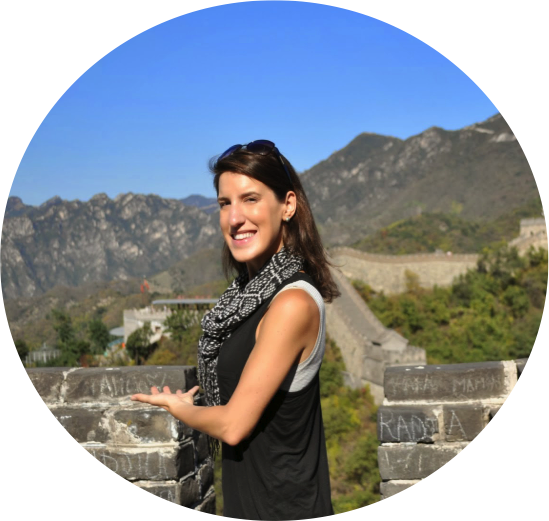When we arrived there was a pretty long line at the entrance but once the park opened at 6am it moved very quickly. To get into the site you must have an official ticket and your passport.
By the time we got back down the mountain we were incredibly tired and hungry. We rested in a spot with a great view of the ruins. Then we left the park to get some food at the cafe. It was probably 10:30am and there was no line at the entrance. Everyone had come first thing in the morning. Because Peru limits the number of people who arrive each day, the site didn't feel that crowded.
We had already learned a lot from our tour in the Sacred Valley but Maria was choc full of new information:
- Machu Picchu was never finished. The Incas were in the process of building it when the Spanish conquistadors arrived. Once the Spanish started demolishing their cities and temples, the Incas abandoned Machu Picchu, burned all bridges and destroyed all roads leading to the city in order to hide it. They did a good job. The ruins were not discovered until 1911, when American Hiram Bingham, introduced it to the world. This is why it's often referred to as the Lost City of the Incas.
-Construction likely began in 1450 and it was probably abandoned in 1572 when the Spanish arrived. If this is true, the Incas only lived here for a little over 100 years.
-The city is about 8,000 feet above sea level and the terraces go all the way down the mountain to the river. It's likely the Incas started building the city from the river up to the peak. The terraces are used for 3 purposes: 1) agriculture - it gave them more space to grow a variety of crops at different climate levels 2) structural support- they supported the city, preventing it from falling down the mountain 3) decorative - they look pretty and were also in the form of the Chakana or Inca cross.
-They didn't use fancy tools to break apart the rock. The rock has natural fissures or cracks. The Incas would wedge a piece of wood into these gaps and saturate the wood with water, causing the wood to expand and break apart the rock into smaller pieces. Then they would polish the rock with other rocks to create stone cubes used for building.
- The location of Machu Picchu was strategic. Why choose to build a city so remote and high up? There were a few reasons. First, there was a natural rock quarry on the site which was their main resource for construction. Second, there was a natural spring that ran through the site that supplied water to the entire city. Third, they wanted to avoid floods which regularly destroyed towns in the valleys. Lastly, they wanted to avoid landslides and this site in particular was a little flatter and rockier than the surrounding mountains and therefore less likely to fall apart.
- The water spring was very important. They built a series of channels and fountains that run throughout the city. Experts believe that the same amount of water that flowed during the time of the Incas still flows today.
- You can tell where the important people lived by the quality of the stone. For example, temples were among the nicest buildings with the best craftsmanship and beautifully polished stone. The King's house and the priest's house were also nicely done. The lesser nobles' homes were made of stone that was less polished and structured. In Inca times, those buildings would have been covered with clay. Note, it's believed that the King did not live here permanently but only visited for about 2 weeks at a time.
Upon our return to Cusco, our main packs (we only carried the mini packs to Machu) were waiting in another lovely little room at the Rumi Wasi. We showered, picked up a couple sandwiches (Chris finally had his chicharones sandwich) and went to bed early. We had an early flight to the jungle the next morning!
Hi Class 2A! We have another question for you. The Incas considered the condor, puma, and snake to be sacred animals because they represented each world - heaven, earth and the underworld. There was another animal that was very important to the Incas. Can you name the animal?




 RSS Feed
RSS Feed
